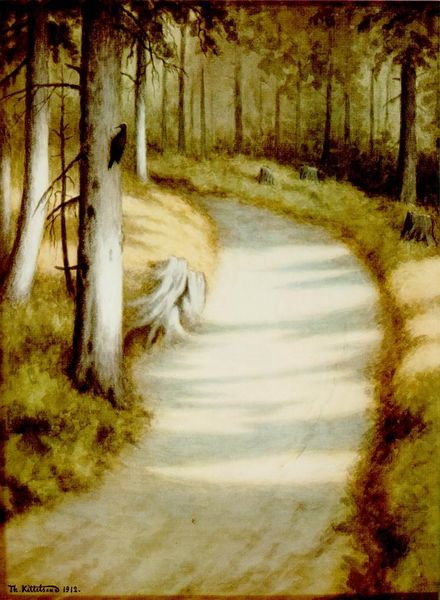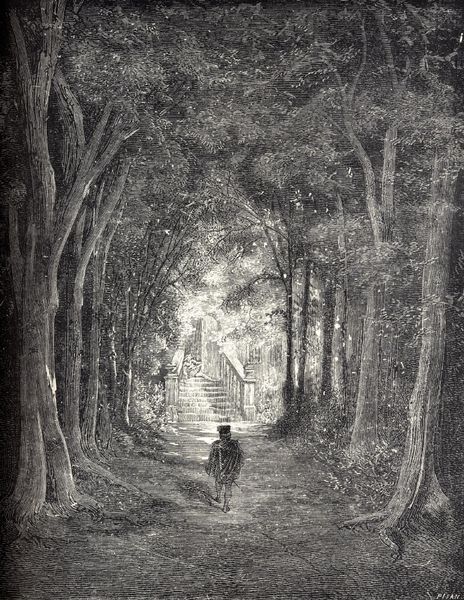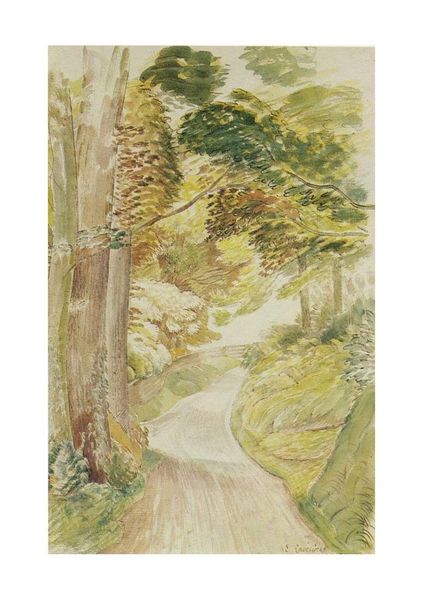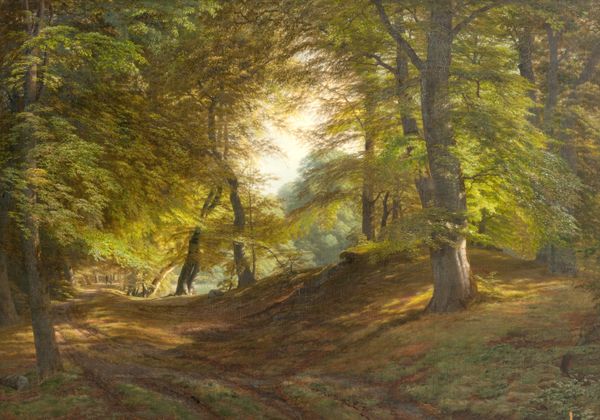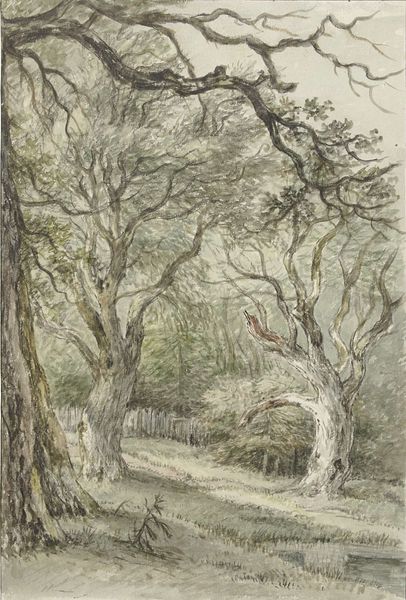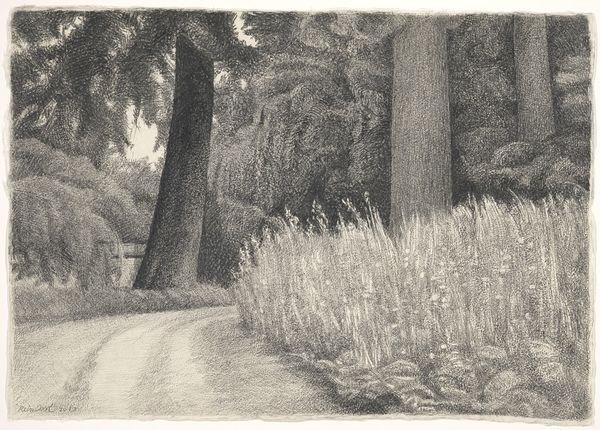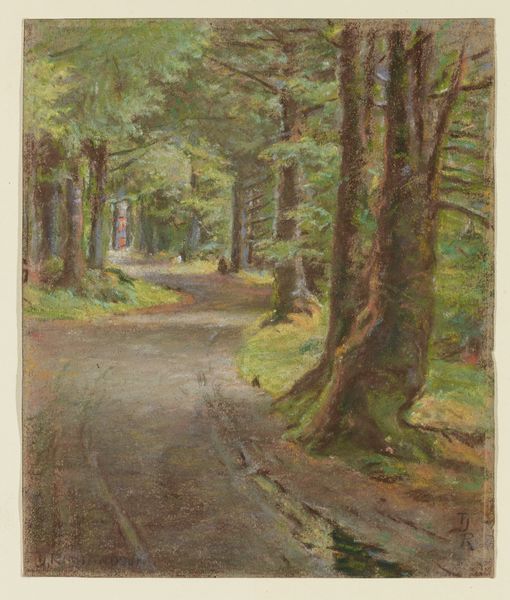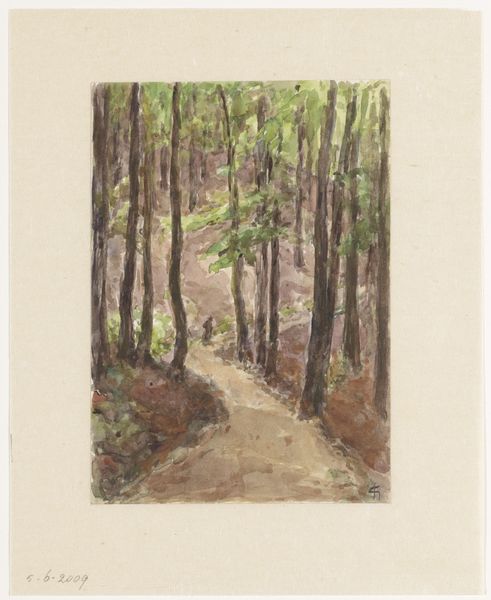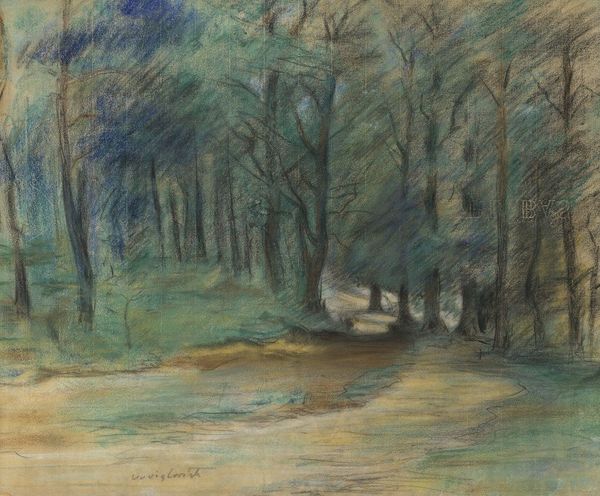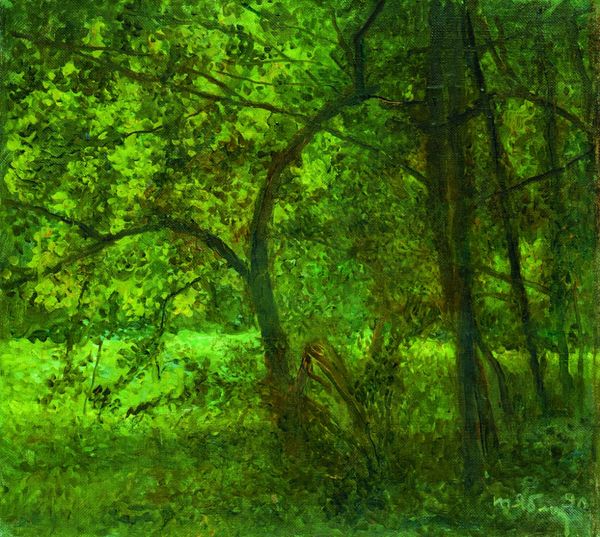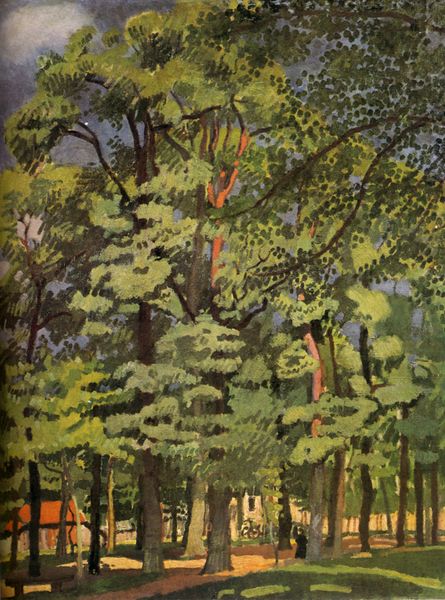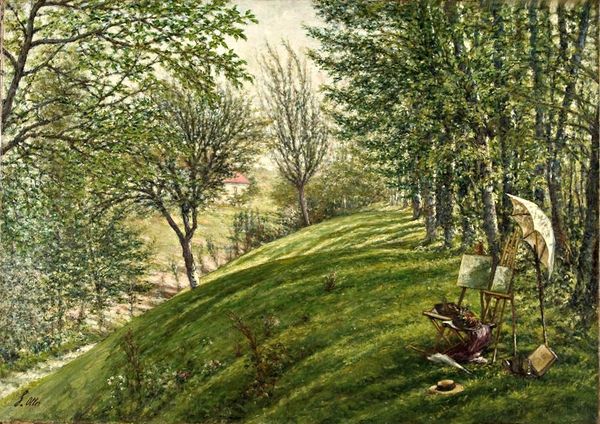
drawing, pencil
#
drawing
#
landscape
#
oil painting
#
pencil
#
realism
Copyright: Public domain
Editor: This is Theodor Kittelsen’s “Woodpecker,” created in 1900. It looks like it's made with pencil and the colors feel muted, creating a very tranquil, almost melancholic atmosphere. What do you see in this piece, focusing on the artist’s formal choices? Curator: Focusing solely on the image before us, observe the linear composition, how the road, acting as a leading line, curves through the forest. The light and shadow patterns create depth, dissecting the scene into contrasting forms. Do you see how the texture varies from the rough bark of the tree with the woodpecker to the smoother surface of the road? Editor: I see it now! It’s all about the relationships between the lines and light that gives shape and depth. So, the realistic portrayal serves more to create abstract shapes? Curator: Precisely. The bird becomes less of a representational element and more a strategic focal point within a complex interplay of form and color. Consider how the curve of the road directs the viewer’s eye. The strategic placement of the woodpecker halts that movement, holding the gaze within the artwork. It is the artist's choices that bring harmony to the piece. Editor: That’s fascinating, viewing realism in this manner. I typically focus on content. I see that even a representational work like this provides so many visual components that can be looked at separately! Curator: Indeed. Appreciating form over subject unveils layers we may have overlooked. Seeing the composition enables deeper understanding.
Comments
No comments
Be the first to comment and join the conversation on the ultimate creative platform.
